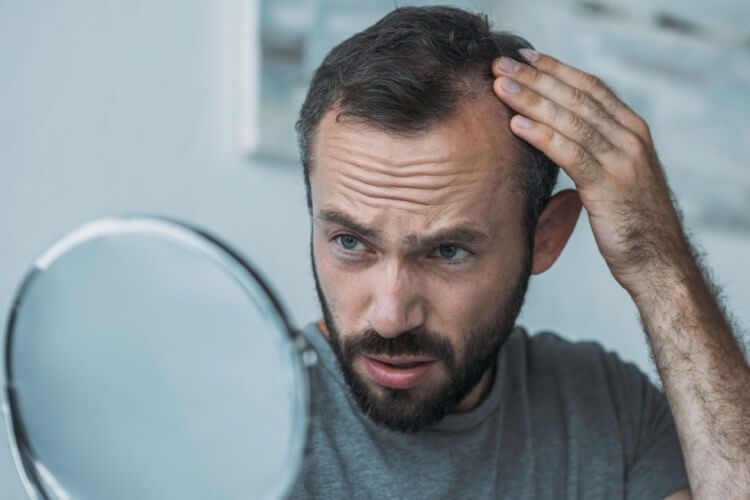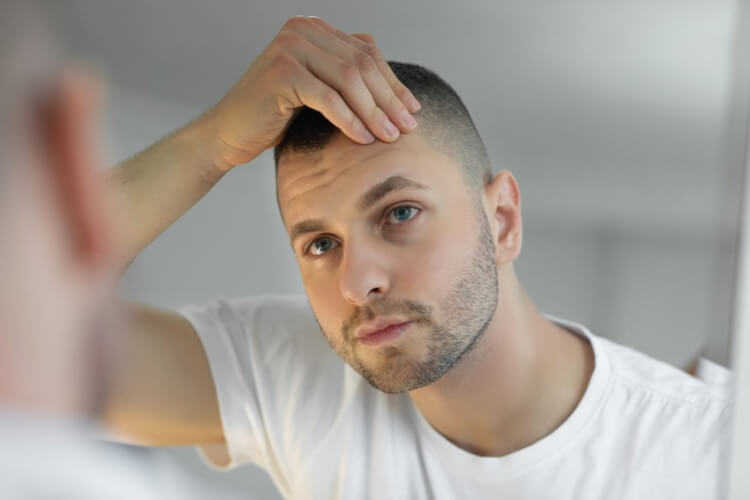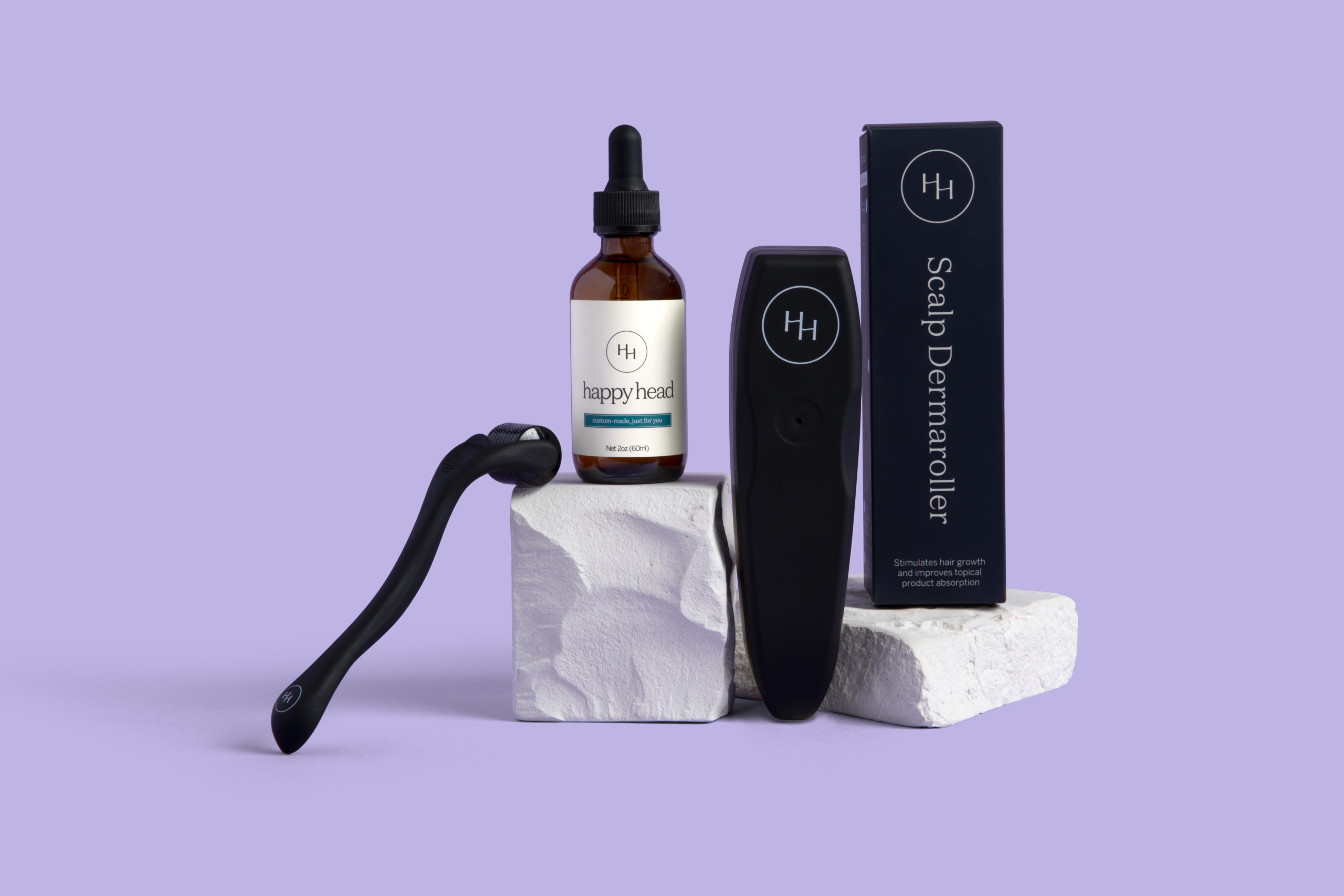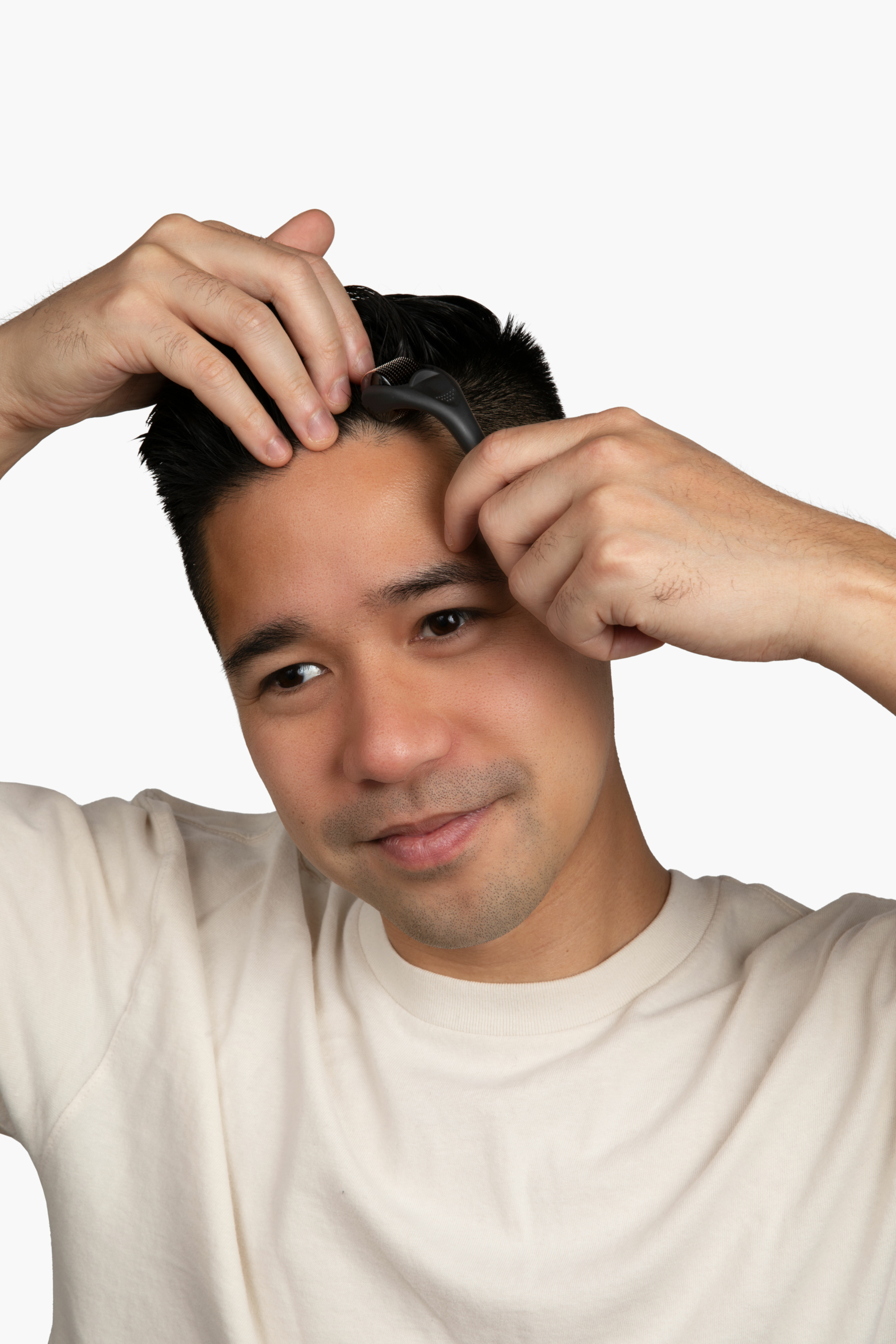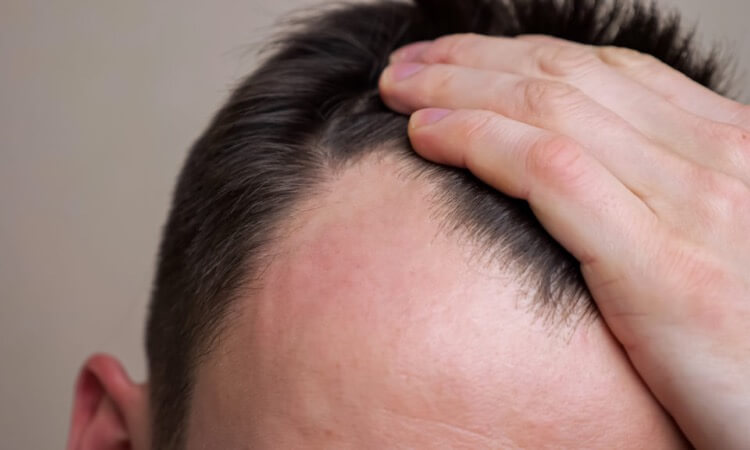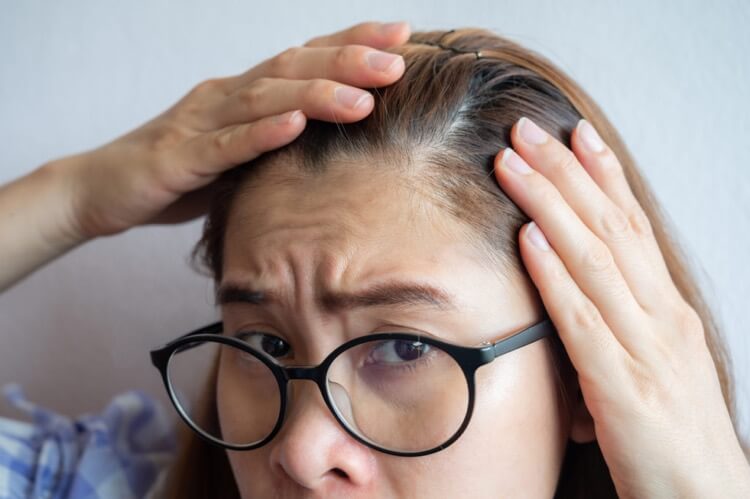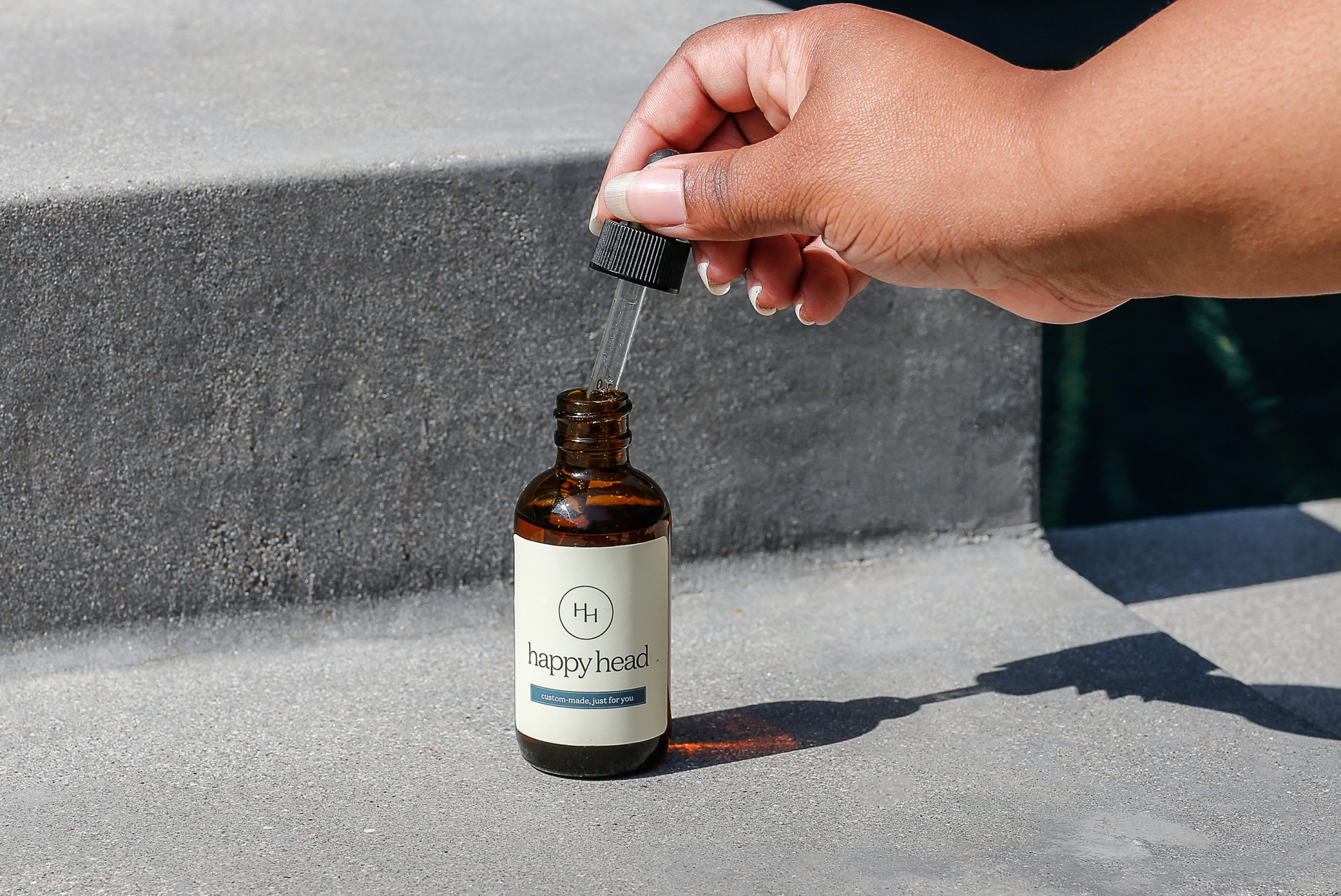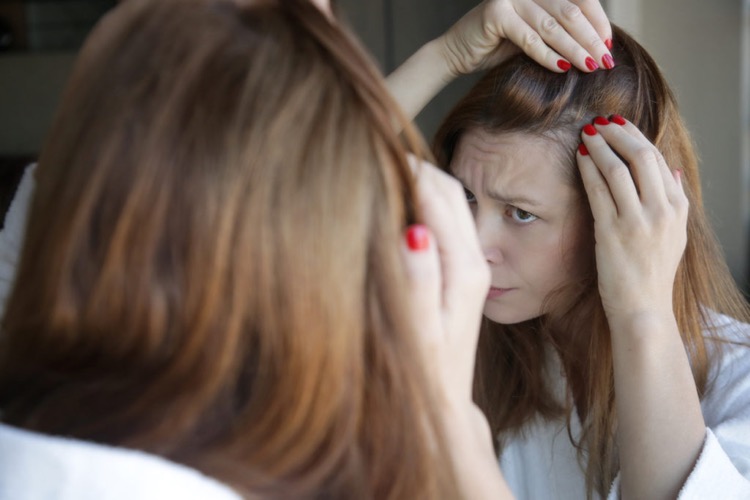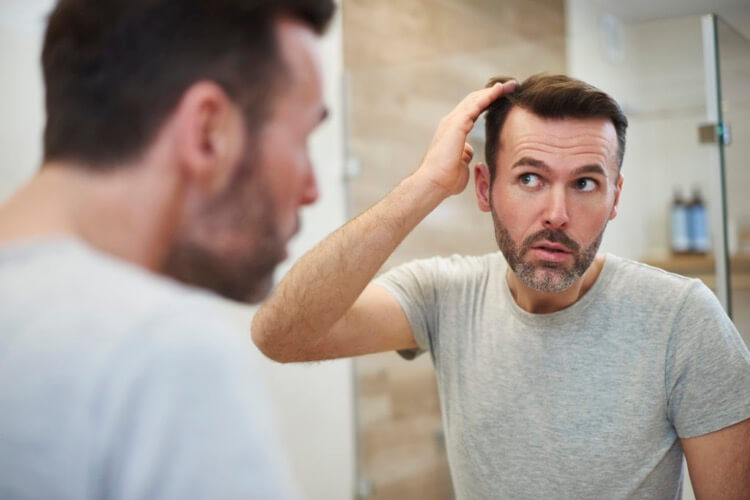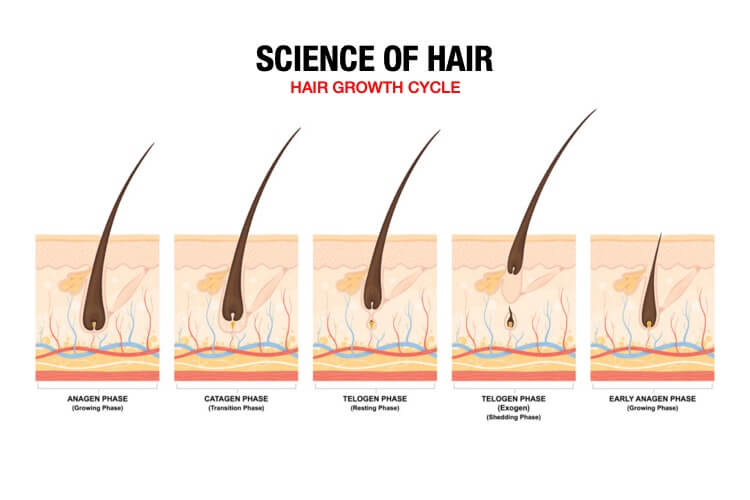Four Vitamins for Healthy Hair

Whether you’re noticing slow thinning throughout your hair or a rapid loss of hair at the crown, there are steps you can take to help thicken and strengthen the hair that you have. Nutraceuticals — vitamins, herbs, minerals and other natural compounds — can help slow hair loss, boost hair production, and nourish your scalp.
What are nutraceuticals?
According to the Food and Drug Administration (FDA) website, nutraceuticals are “pharmacy grade” nutritional supplements – vitamins, minerals, extracts, and herbs – that offer a health benefit. Ironically, however, the FDA itself doesn’t use the word “nutraceutical” in any of its federal laws. Instead of categorizing nutraceuticals in their own area, the FDA considers them to be “dietary supplements.” (01)
What does all this talk about nutraceuticals have to do with hair? Well, you need to know what you’re getting into. Many dietary supplements that target hair loss fall under the category of nutraceuticals or dietary supplements, both of which do not have strict FDA oversight. This is not to say that these supplements don’t work, but you do have to be more mindful about the product you’re purchasing. In addition, dietary supplements can cause toxicities if taken too frequently or not taken as directed.
That said, valid scientific evidence points to specific vitamins and minerals that can help keep hair healthy. Here are four of the most essential vitamins and minerals to strengthen your hair. (02)
1. Biotin
Biotin, another name for vitamin B7 or vitamin H, encourages keratin production in both skin, nails, and hair. Because hair is mostly made of keratin, biotin is an essential vitamin for a healthy head of hair. However, the body doesn’t make its own biotin and, because it’s water-soluble, it’s not stored in the body for long. Instead, biotin is obtained from food sources like legumes, nuts, whole grains, and rice or supplemented through nutraceuticals.
If you’re consuming a healthy diet, then you’re probably getting enough biotin. However, women who are pregnant or breastfeeding may need more biotin than usual. Heavy alcohol use or a health condition called biotinidase deficiency can also cause a biotin deficiency. A biotin deficiency can result in red, dry or scaly skin, brittle hair, and hair loss.
A review of 18 published research papers found that people with insufficient biotin levels who had poor hair and nail growth found clinical improvement after biotin use. Supplementation of biotin, especially for people who are deficient, can slow hair loss and encourage hair growth. (03)
2. Vitamin A
Vitamin A, also known as retinol or beta-carotene, is essential for growth, especially for fast growing tissues like skin and hair. Because vitamin A keeps skin moisturized by helping skin glands make sebum (an oily substance), it’s vital for a healthy scalp and hair. Without a sufficient amount of sebum, your hair becomes brittle and the scalp becomes too dry, damaging hair and causing hair loss. (04)
You can get vitamin A through your diet from vegetables like pumpkins, carrots, and kale. In addition, when supplemented in small amounts through nutraceuticals, vitamin A can alleviate deficiency symptoms such as anemia, dry eyes, and thinning hair. But although vitamin A is vital for a healthy head of hair, it’s important not to go overboard. Excessive vitamin A consumption can lead to the same thing you may be trying to avoid — hair loss!
Consuming too much vitamin A within a short period of time can also lead to vitamin A toxicity. When taken in excess, vitamin A can cause vomiting, blurry vision, vertigo, or nausea. Women who are pregnant or breastfeeding should consult with a physician before taking vitamin supplements, as too much vitamin A may lead to birth defects and impairments in children. (05)
3. Vitamin D
Your body typically makes vitamin D through exposure to the sun’s rays, but the modern lifestyle doesn’t offer enough opportunities for it to do so. Other sources of vitamin D come from foods like fatty fish and mushrooms. That said, most people don’t get enough vitamin D. Which is unfortunate, because vitamin D is necessary for hair production. Hair follicles depend on vitamin D to help grow hair and keep hair from shedding prematurely.
Low levels of vitamin D have been linked to hair loss conditions like telogen effluvium, alopecia areata, and both female and male pattern hair loss. (06) A 2019 review published in the American Journal of Translational Research found a link between vitamin D deficiency and hair loss or alopecia, though the exact process remains unclear. Researchers believe that Vitamin D is part of the body’s keratin-producing process, which is necessary for a healthy scalp and hair. Without enough vitamin D, keratinocytes within the hair follicles have difficulty growing and keeping hair, which leads to hair shedding and conditions like alopecia areata. (07)
Studies indicate that the best way to increase levels of vitamin D when a deficiency occurs is through nutraceutical vitamin D supplementation. For hair loss, combined therapies – including vitamin D supplementation – have the best results. However, like vitamin A, vitamin D toxicity can develop when taken in large doses. Vitamin D toxicity, though rare, results in serious health conditions like a buildup of calcium in the blood. The rise in calcium levels causes nausea, vomitning, weakness, bone pain, and kidney problems. (08)
4. Vitamin E
Vitamin E is the name for a group of fat-soluble antioxidants that are vital to the immune system, brain functioning, tissue development, and healthy skin and hair. In regards to hair, vitamin E begins at the root. This vitamin boosts nutrient circulation in the skin – including the scalp – which encourages healthy hair growth. As a potent antioxidant, vitamin E reduces sun and environmental damage on the scalp and hair. (09)
A 2017 study of 21 participants who were administered Vitamin E supplementation in the form of tocotrienol showed significant improvement with their hair loss when compared to a group that took a placebo. Volunteers were evaluated before, during, and after 8 months of supplementation by counting and weighing hair strands and clippings. This study indicates that especially in cases of vitamin E deficiency, vitamin E supplementation may be a viable addition to any treatment for hair loss. (10)
However, like most vitamins, too much of a good thing can be bad. Excessive vitamin E supplementation may lead to hypervitaminosis E, which increases the risk of bleeding and reduces thyroid hormone levels. Additionally, too much vitamin E may cause the exact opposite of what you’re looking for – it can result in slower hair growth. (11)
The Takeaway: Nutraceutical Supplements and Hair Growth
There’s no denying that vitamins and minerals are necessary for healthy hair growth. In particular, biotin, vitamin A, vitamin D, and vitamin E are crucial for both the scalp and hair. These vitamins encourage cell formation, boost nutrient blood flow, and establish stable sebum oil levels that keeps hair full and shiny. A deficiency in any of these vitamins can lead to hair thinning or worsen hair loss from conditions like telogen effluvium, androgenic alopecia, and alopecia areata.
Furthermore, deficiencies may occur even if an individual eats a healthy diet with a variety of foods. Age, medications, and medical conditions are all factors that can lead to vitamin deficiencies and hair loss. In addition, genetics, infections, toxins, and stress can all compromise hair loss or lead to vitamin deficiencies.
Unfortunately, treating hair loss with vitamin supplements isn’t as easy as purchasing a bottle or two at the drugstore. Because taking an excess of vitamins and minerals through nutraceutical supplements can result in nutrient toxicities, it’s essential to work with a doctor before diving into a bottle of Vitamin D. At Happy Head, every customer works with a physician to find the best – and safest – individualized treatment for hair loss. Contact us today for a free consultation. Let’s work together to find the best hair loss treatment option for you!
Resources:
(01) https://www.fdareader.com/blog/how-the-fda-regulates-nutraceuticals
(02) https://www.ncbi.nlm.nih.gov/pmc/articles/PMC6380979/
(03) https://www.ncbi.nlm.nih.gov/pmc/articles/PMC5582478/
(04) https://pubmed.ncbi.nlm.nih.gov/21914489/
(05) https://www.ncbi.nlm.nih.gov/books/NBK532916/
(06) https://www.ncbi.nlm.nih.gov/pmc/articles/PMC5751255/
(07) https://www.ncbi.nlm.nih.gov/pmc/articles/PMC6789271/
(08) https://www.ncbi.nlm.nih.gov/pmc/articles/PMC2912737/
(09) https://ods.od.nih.gov/factsheets/VitaminE-HealthProfessional/
(10) https://www.ncbi.nlm.nih.gov/pmc/articles/PMC3819075/
(11) https://www.ncbi.nlm.nih.gov/pmc/articles/PMC5315033/#b57-dp0701a01

